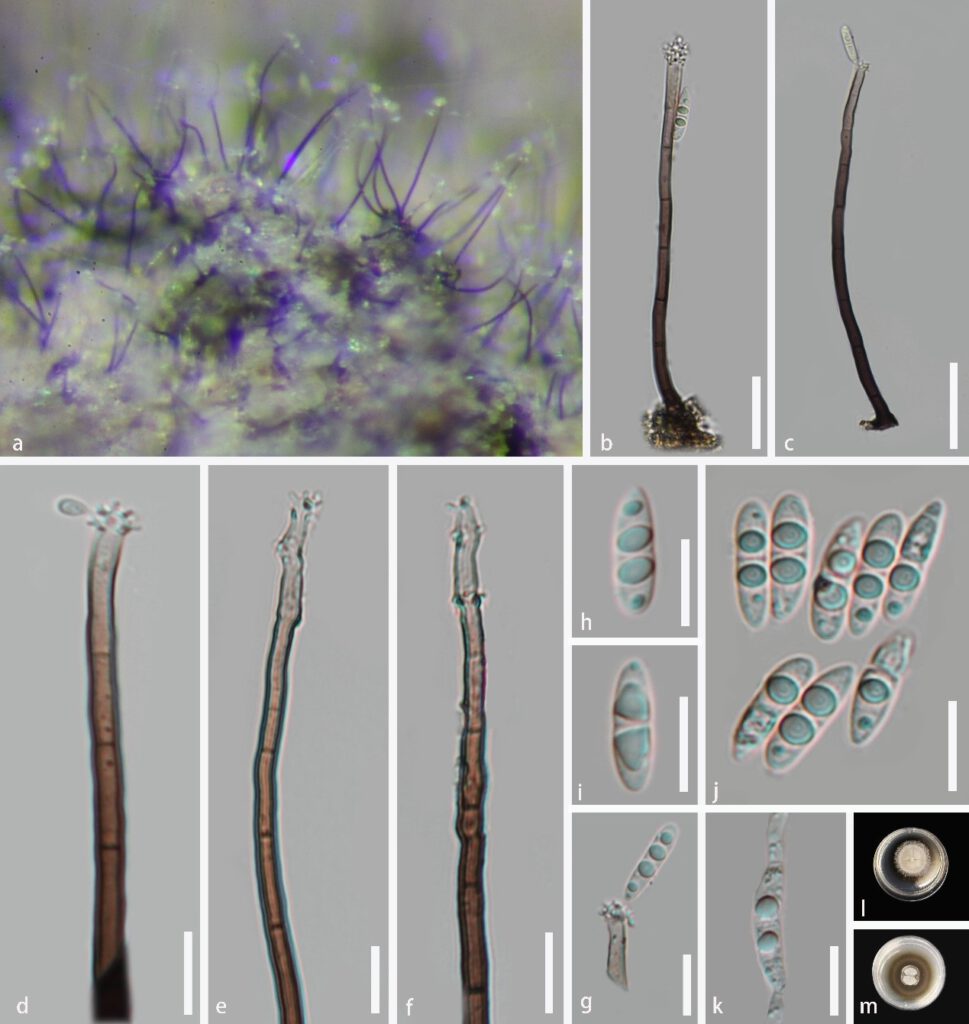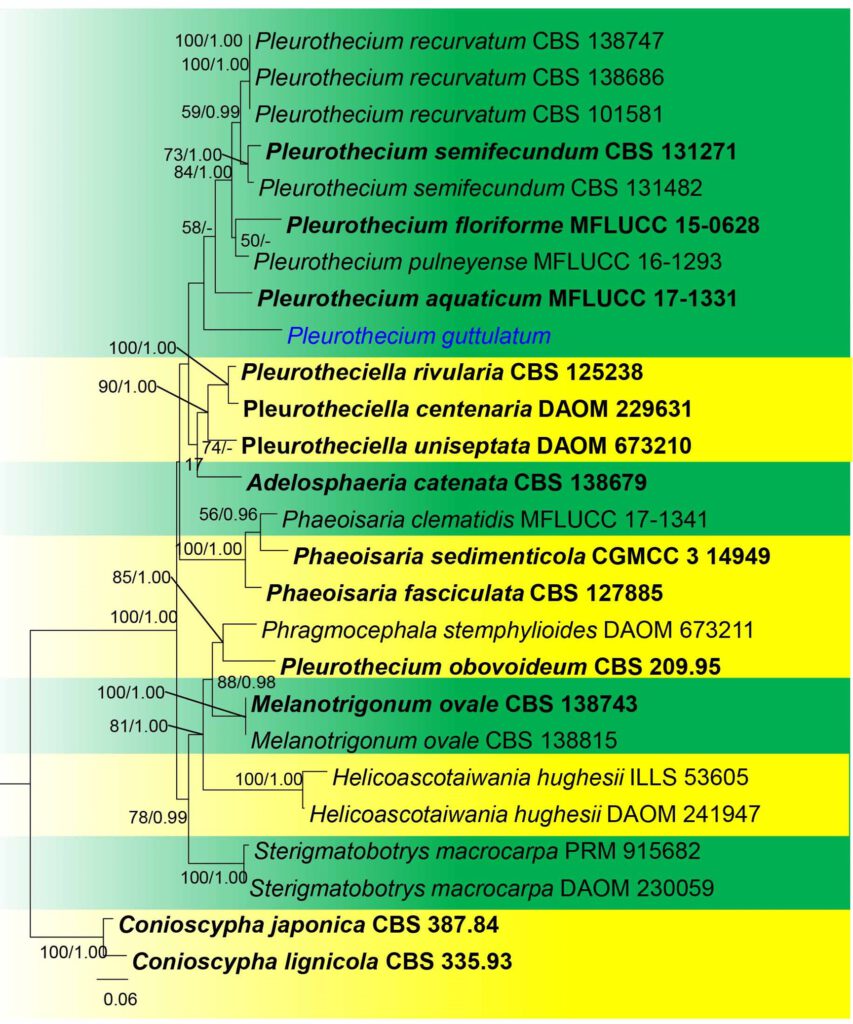Pleurothecium guttulatum J. Ma, Y.Z. Lu & K.D. Hyde, sp . nov . Fig. 5
MycoBank number: MB 557784; Index Fungorum number: IF 557784; Facesoffungi number: FoF 08709;
Etymology: Referring to the f ascospores with small guttules.
Holotype: GZAAS 21-0384
Saprobic on decaying wood in a freshwater stream. Asexual morph Colonies on natural substrate superficial, effuse, brown or dark brown, smooth. Mycelium immersed or superficial, smooth. Conidiophores 82–177× 3.5–5.5 μm (x¯ = 121.3 × 4.3 μm, n = 20), macronematous, mononematous, sucylindrical, straight, unbranched, smooth, septate, brown, paler towards the apex. Conidiogenous cells 25–38 × 2.7–3.8 μm (x¯ = 29.6 × 3.2 μm, n = 15), holoblastic, polyblastic, integrated, terminal, subhyaline to pale brown, subcylindrical. Conidia 13.4–15.5 × 3.4–5.5 μm (x¯ = 14.4 × 4.4 μm, n = 21), acrogenous, solitary, aseptate, pale brown, straight, guttulate, hyaline or pale green, smooth. Sexual morph: Not observed.
Culture Characters: Colonies growing slowly on PDA, reaching 37 mm in 35 days at 25 °C, flat, filiform, round, gray or white, smooth; In reverse, milky at the center, brown or dark brown at the margin.
Material examined: China, Guizhou Province, Xishui County, on decaying wood submerged in a freshwater stream, 13 February 2021, Jian Ma, TL2(GZAAS 21-0384, holotype); ex-type living culture, GZCC 21-0670. GenBank ITS:xxxx; LSU:xxxx.
Notes: Our new collection fits well with the generic concept of Pleurothecium in having macronematous, mononematous, drown conidiophores, polyblastic, integrated conidiogenous cells and septate, smooth allantoid or fusiformis conidia. In our phylogenetic analyses, our new collection of Pleurothecium guttulatum was placed within Pleurothecium and is basal to other Pleurothecium species (Fig. 6). Pleurothecium guttulatum resembles P. aquaticum in the shape of the conidiophores, and conidia (Luo et al. 2018). However, Pleurothecium guttulatum differs from. aquaticum by its darker and longer conidiophores (82–177 μm vs 53–65 μm), smaller(13.5–15.5 × 3–5.5 μm vs 19–21 × 4.5–5.5 μm). Hence, based on both morphology and phylogeny, we introduce our collection as a new species of Pleurothecium guttulatum.

Fig. 5 Pleurothecium guttulatum (**, Holotype) a Colony on decaying wood b–c Conidiophores with attached conidia d–g Conidiogenous cells and conidia h–j Conidia k Germinating condium l–m Colony on PDA from above and below. Scale bars: b, c = 20 μm, d-k = 10 μm.

Fig. 6 Phylogram generated from maximum likelihood analysis based on combined LSU and ITS sequence data. Twenty-six taxa were included in the combined analyses, which comprised 1420 characters (LSU: 910, ITS: 510) after alignment. The best scoring RA × ML tree with a final likelihood value of -8062.087121 is presented. The matrix had 554 distinct alignment patterns, with 12.28% of undetermined characters or gaps. Estimated base frequencies were as follows: A = 0.237517, C = 0.258422, G = 0.298070, T = 0.205990; substitution rates: AC = 1.476793, AG = 2.132836, AT = 2.079716, CG = 0.549113, CT = 8.080868, GT = 1.000000; gamma distribution shape parameter α = 0.208156. Bootstrap support values for ML equal to or greater than 50% and BYPP equal to or greater than 0.95 are given above the nodes. The tree is rooted with Conioscypha lignicola CBS 335.93 and C. japonica CBS 387.84.
